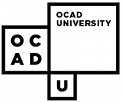The Centre for Academic and Adaptive Technology (CAAT) advocates for the inclusion of access hooks in subsequent standards so information presented in a VRML environment can be accessable
![[Image of the VRML logo.]](http://www.utoronto.ca/atrc/images/vrmlanim.gif)

The VRML Architecture Group (VAG) created the VRML 2.0 specification (VRML'97). Unfortunately access hooks such as alternative text nodes were not included in the 2.0 standard. As discussion continues on how VRML should evolve the Centre for Academic and Adaptive Technology (CAAT) will advocate for the inclusion of access hooks in subsequent standards so information presented in a VRML environment can be accessable.
The organisation now responsible for creating the next VRML standards is the Web3D Consortium. Information on the development of the VRML standard can be found on their site http://www.web3d.org/.
The National Post wrote this article on the work being done at the Centre for Academic and Adaptive Technology.<-->
A CANARIE HEN'97 undertaking to establish multiple sensory modalities in cyberspace for the masses.
A paper written by Tamara Weiss.
A paper written by Lake Porter and Jutta Treviranus on issues surrounding the implementation of haptic interfaces to worlds created with VRML.
A list of sites about virtual reality modeling language and the 3D web.
An introduction to VRML(1.0), previous access solutions, and challenges faced in the creation of VRML 2.0. (This page is included for 'historical' purposes.)



![[Image of the VRML logo.]](http://www.utoronto.ca/atrc/images/vrmlanim.gif)